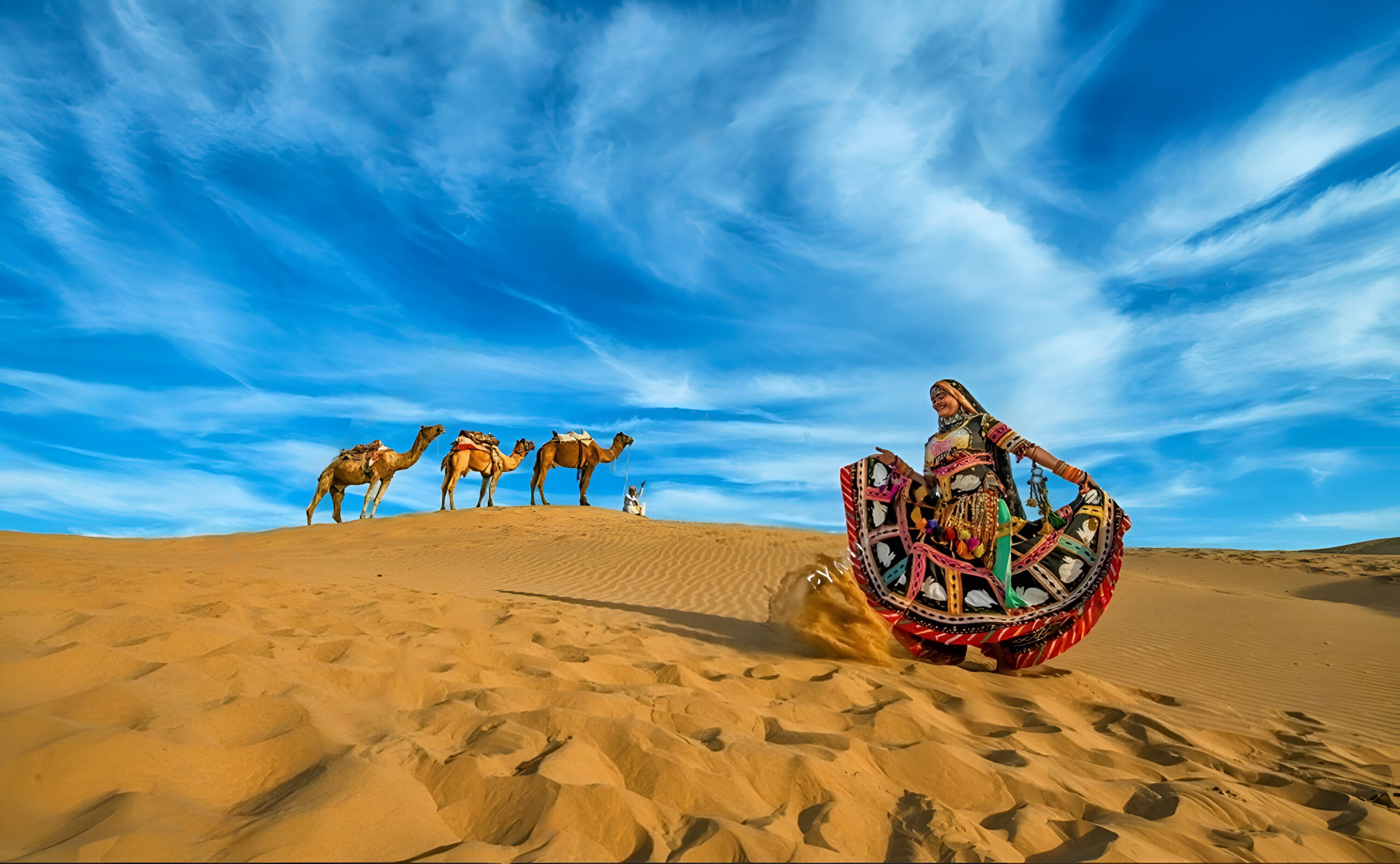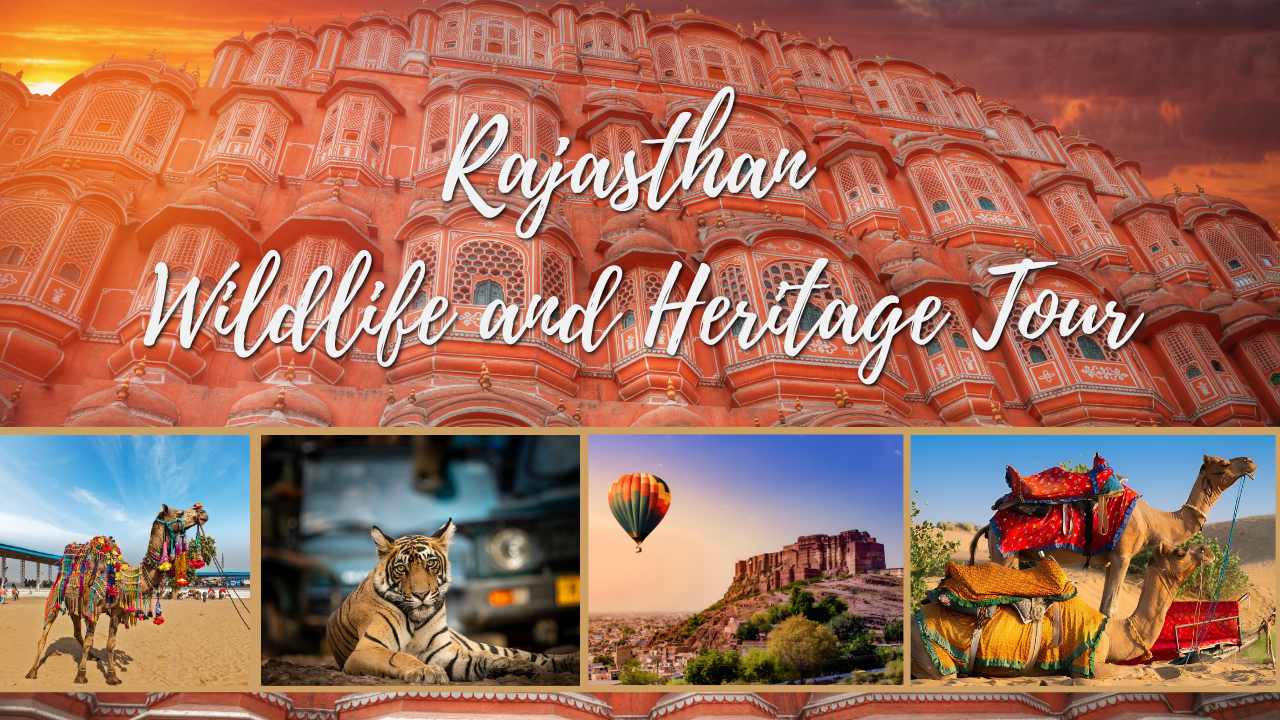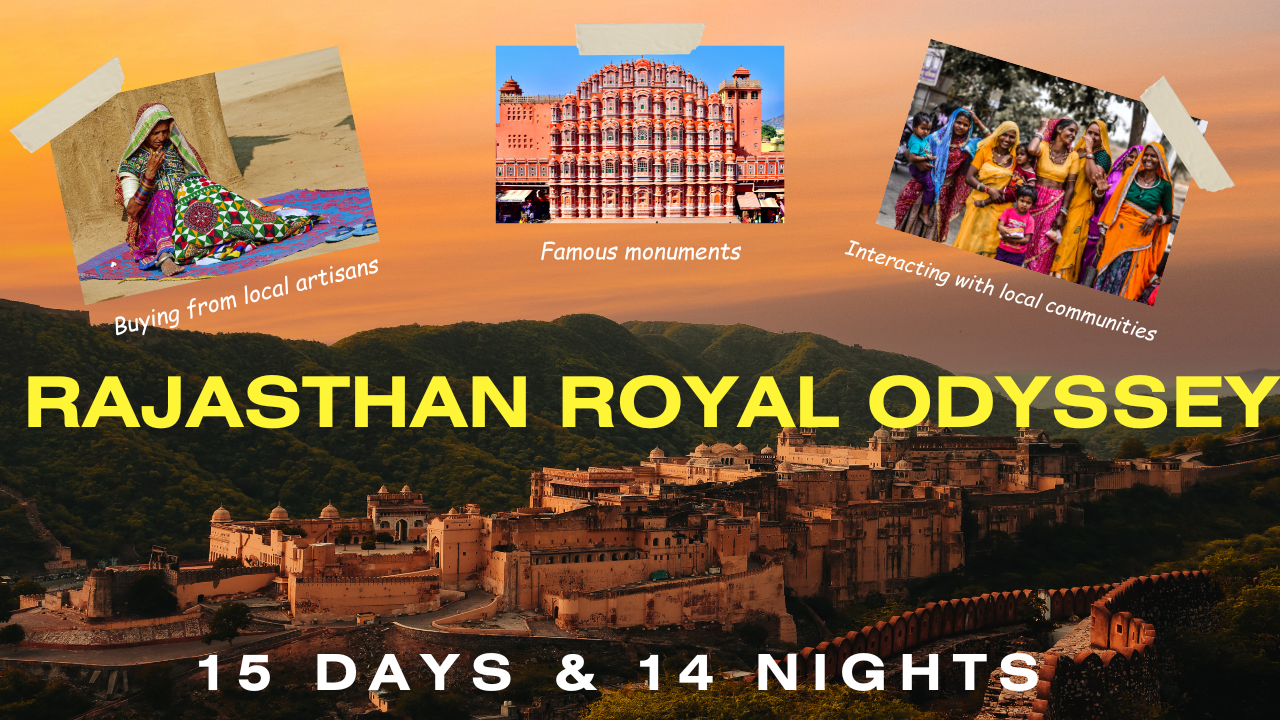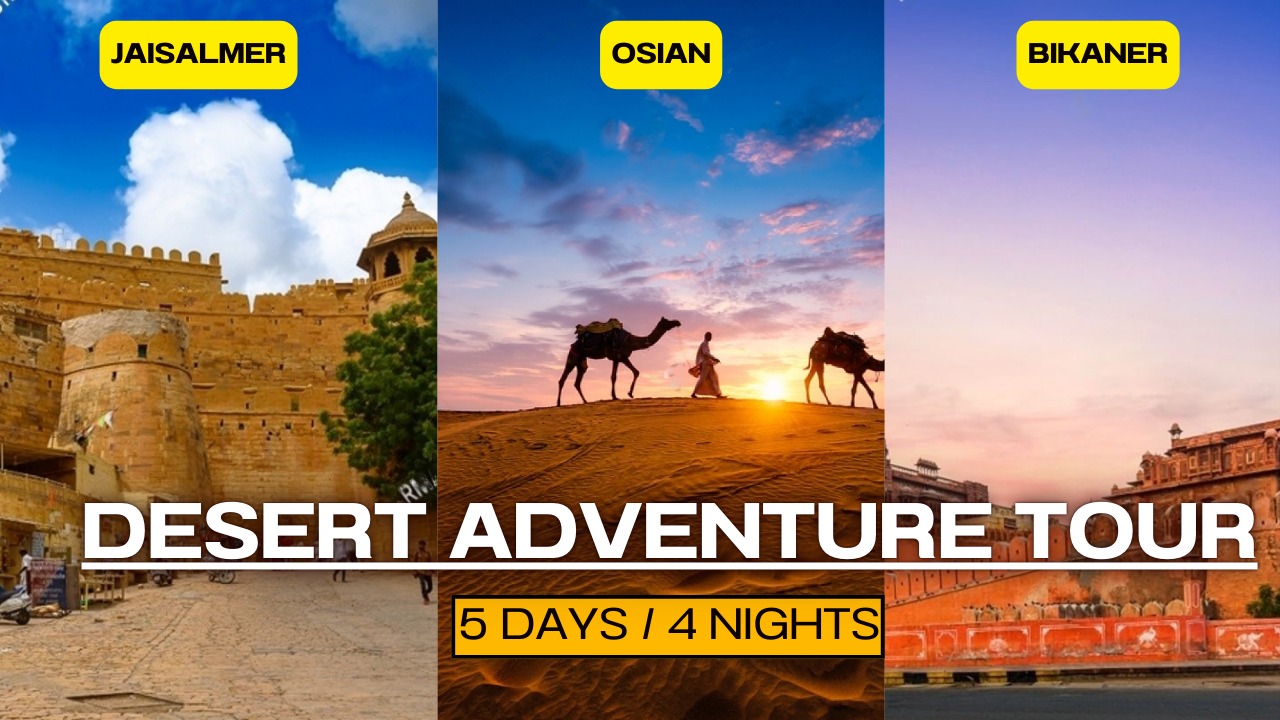Overview
Jaisalmer, located in the heart of the Thar Desert in Rajasthan, is often referred to as the "Golden City" due to its unique yellow sandstone architecture, which takes on a golden hue, especially during sunset. This charming city offers a perfect blend of history, culture, and adventure, making it a must-visit for those looking to explore Rajasthan's desert landscape.
Key Attractions in Jaisalmer
- Jaisalmer Fort: Also known as Sonar Quila, Jaisalmer Fort is one of the largest and most well-preserved fortresses in the world. It’s a living fort with homes, shops, and temples within its walls. The Raja Mahal and Jain Temples inside the fort are architectural marvels.
- Patwon Ki Haveli: This collection of five havelis is a beautiful example of the region’s architecture. The intricate carvings, beautiful frescoes, and historical significance make it one of Jaisalmer’s most visited attractions.
- Sam Sand Dunes: Located about 40 km from Jaisalmer, the Sam Sand Dunes offer an authentic desert experience with camel rides, jeep safaris, and the chance to camp under the stars. The dunes are especially mesmerizing at sunset.
- Gadi Sagar Lake: Built by Maharawal Gadsi Singh, this man-made reservoir offers a peaceful retreat. The lake is surrounded by temples, ghats, and cenotaphs, making it a popular spot for boat rides and photography.
- Kuldhara Village: An abandoned village with a mysterious past, Kuldhara is said to have been deserted overnight by its residents. The village ruins, surrounded by the desert, make for a fascinating and eerie visit.
- Jain Temples: Jaisalmer is home to a number of intricately carved Jain temples within the fort complex, showcasing the region’s rich religious heritage. These temples are dedicated to various Tirthankaras and are known for their delicate architecture.
Cultural and Historical Significance
Jaisalmer has a deep cultural and historical legacy, shaped by its strategic location on the ancient Silk Route. The city was founded in the 12th century by Maharawal Jaisal, and over the centuries, it grew into an important trading center. Its sandstone architecture, adorned with carvings and intricate designs, reflects the artistic and architectural brilliance of the Rajput rulers. The town's streets are lined with shops selling local handicrafts, textiles, and jewelry, which reflect the cultural fusion of Rajasthan and Central Asia.
Best Time to Visit
The best time to visit Jaisalmer is between October and March, when the weather is cooler, making it ideal for sightseeing and desert activities. Summers (April to June) can be extremely hot, with temperatures soaring above 40°C, while the monsoon season brings humidity and sporadic rains.
How to Reach Jaisalmer
- By Air: Jaisalmer Airport connects the city with major cities like Delhi and Mumbai, though the connectivity is limited.
- By Rail: Jaisalmer Railway Station is well-connected to major cities in Rajasthan and India, including Jodhpur, Jaipur, and Delhi.
- By Road: Jaisalmer is connected by well-maintained roads to Jodhpur, Bikaner, and Jaipur. Private taxis and buses are popular options for traveling by road.
Shopping and Local Crafts
Jaisalmer is a great place to buy handicrafts and souvenirs such as camel leather goods, Rajasthani textiles, block-printed fabrics, jewelry, and traditional paintings. The markets around the Jaisalmer Fort and Patwon Ki Haveli are filled with shops offering these unique items. Don’t forget to pick up Khaadi clothes, embroidered fabrics, and sandstone sculptures.
Why Visit Jaisalmer?
Jaisalmer offers a unique experience of Rajasthan’s desert culture. Its stunning forts, havelis, and temples, combined with the vast desert dunes, make it an enchanting destination. Whether you’re exploring its history, taking a camel ride across the sand dunes, or shopping for exquisite handicrafts, Jaisalmer promises a one-of-a-kind experience in the heart of the Thar Desert.





